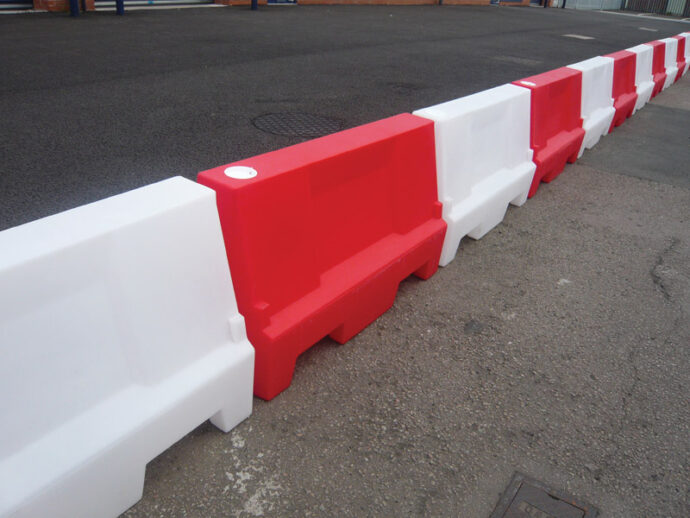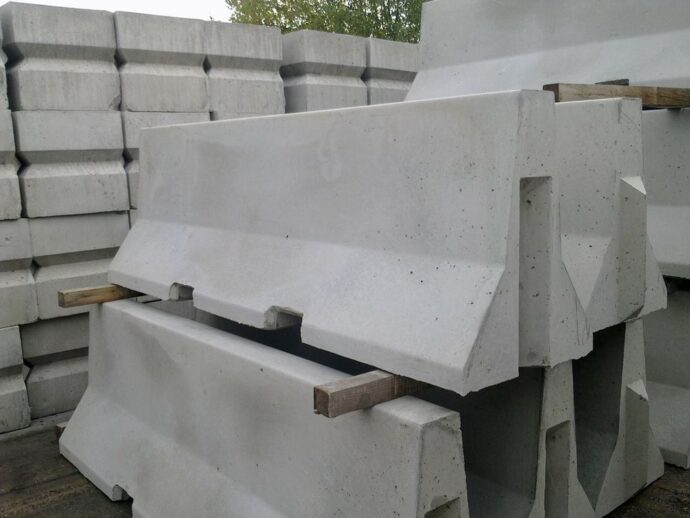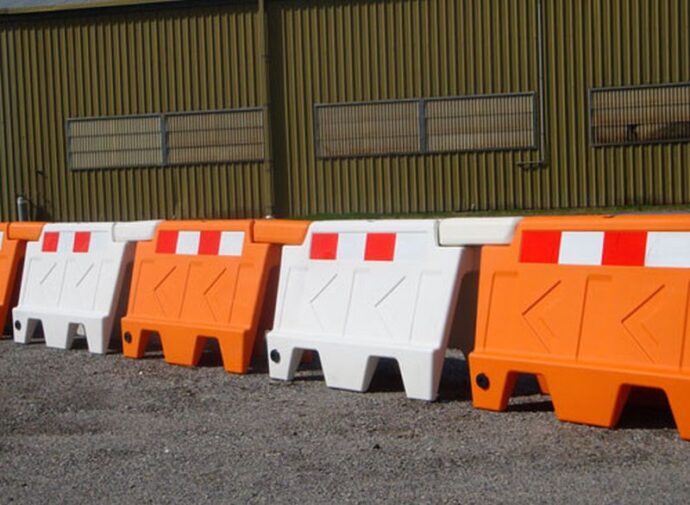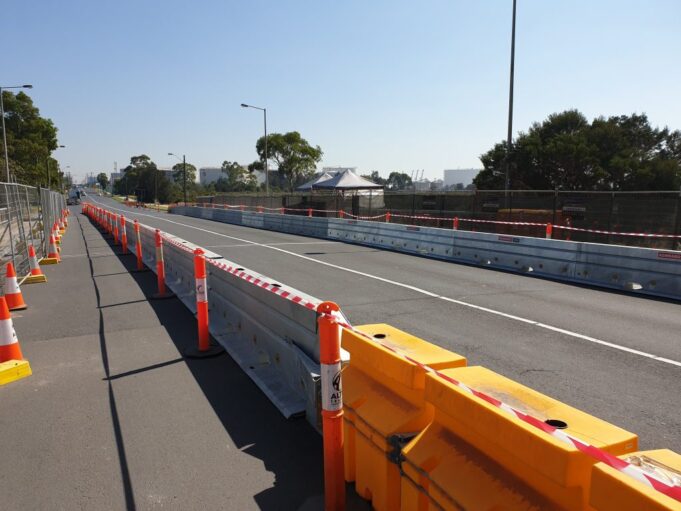The Concrete Jersey Barriers are also known as Concrete Jersey Barricades. They were created by the New Jersey State and Highway Department at the Stevens Institute of Technology in the year 1959.
As the name suggests, Concrete Jersey Barriers are made up of concrete. They were initially used to divide the numerous traffic lanes in order to reduce the traffic jam. Nowadays, its usage has changed slightly.
Jersey barriers are mainly used to divert traffic from construction sites and zones towards another area. This is done in order to avoid accidents and to make sure that the construction workers are not disturbed. If you need steel or metal barricades and retractable belt barriers you can check out the various barricades available on crowdcontrolcompany’s website, they offer the largest assortment of crowd control equipment online.
The shift in the way Jersey Barriers were used led to the invention of Water-filled Barriers or Water-filled Barricades.
Water-filled Barriers or Water-filled Barricades

Water-filled Barriers are nothing but a more portable version of the Concrete Jersey Barriers. They were invented by the Federal Highway Administration (FHWA) to serve as an alternate to the Concrete Jersey Barriers.
They are much lighter in weight as compared to Concrete Jersey Barriers because they are made up of plastic and filled with either water or sand. Their light-weight makes them highly-portable and, at the same time, safer for people involved.
Before we discuss how Water-filled Barriers and Concrete Jersey Barriers are different from each other, let us look at the way they are similar to each other.
Similarities Between Water-filled Barriers And Concrete Jersey Barriers
The Water-filled Barriers are similar to Concrete Jersey Barriers in the following ways:

1. Used To Create Barrier Walls
Just like Concrete Jersey Barriers, Water-filled Barriers can be easily interlocked with each other. This feature allows them to be made into a concrete wall by interlocking the various number of barriers into any shape and length.
Also, the interlocking ensures that there isn’t any gap present between the barriers. This leads to the creation of an ultimate barrier wall.
2. High Durability, Especially In Rough Weather Conditions
There is no doubt that Concrete Jersey Barriers are quite strong and durable because they’re made-up of concrete. Although Water-filled Barriers are made-up of plastic, they are quite durable.
When the large Water-filled Barriers are filled with water, they’re able to stand strong. They can even withstand strong gusts of wind without tumbling down.
3. Common Uses
Both Water-filled Barriers and Concrete Jersey Barriers have various common uses. Some of them are:
- Detour routes on a highway or any other roadway
- Barriers to separate traffic lanes
- Alienate construction sites to avoid traffic jams
- Creation of a barrier wall to stop people from entering somewhere
Let us now compare Water-filled Barriers with Concrete Jersey Barriers and look at the different ways in which they contrast with each other.
Water-filled Barriers vs. Concrete Jersey Barriers

Water-filled Barriers are different from Concrete Jersey Barriers in terms of the following parameters:
1. Portability
Water-filled Barriers are made up of plastic, and hence, they are quite light in weight and highly portable. Also, they need to be moved frequently from one place to another in order to empty and re-fill the water inside.
On the other hand, Concrete Jersey Barriers are not portable due to the fact that they are made up of concrete. The concrete amounts to their heavy-weight that makes it hard for people to move them every now and then.
2. Installment
Since Water-filled Barriers are made up of plastic and are filled with water, they are perfect for temporary uses such as re-directing traffic to a different route for a limited period.
Whereas Concrete Jersey Barriers, due to their lower portability, are used at places where they would be needed for a long time. It’s mostly needed at construction sites where it would remain there permanently till the construction work has been completed.
3. Visibility
Water-filled Barriers are much more visible as compared to Concrete Jersey Barriers. This is because they are made up of plastic and are available in various colors. The most common colors that are used in Water-filled Barriers are white and orange.
These colors are used. They can be easily seen by people on the road, especially when they are driving. Additionally, they both are light and bright colors. Hence, they are easy to spot even during the night-time when there are low brightness levels.
On the other hand, Concrete Jersey Barriers are strong but provide less visibility because they are not available in different colors. Their use as barriers in airports or near construction zones is not ideal as people might bump into them and sustain some serious, life-threatening injuries.
4. Crash Barriers
One of the biggest differences between Water-filled Barriers and Concrete Jersey Barriers is that the former is not the crash barrier. This is because the Water-filled Barriers can be easily breached by the people due to their light-weight and hollow structure.
The latter, Concrete Jersey Barriers, are Crash Barriers because they are strong enough to prevent heavy vehicles from passing through them. It also includes an additional feature of a slopy base that would help in directing the vehicle towards the road again.
Final Words

Water-filled Barriers or Water-filled Barricades are a portable and light-weight alternative to the original Concrete Jersey Barriers. Both of them perform similar functions of diverting the traffic to another route but are used in different locations.
Wate-filled Barriers are more convenient for use near construction sites, especially during the night-time. This is because they are available in various bright colors that would urge people to drive safely. Additionally, they are light in weight but still quite sturdy.
They can withstand rough weather conditions and, at the same time, won’t cause much damage if any vehicle bumps into them. However, they are not Crash Barriers and can be breached by a certain amount of people together.
Whereas Concrete Jersey Barriers are not portable and are often known as ‘permanent barriers’ because of their heavy-weight and sturdiness. They are mainly used to create permanent divisions between lanes to reduce the traffic.















